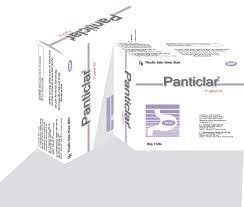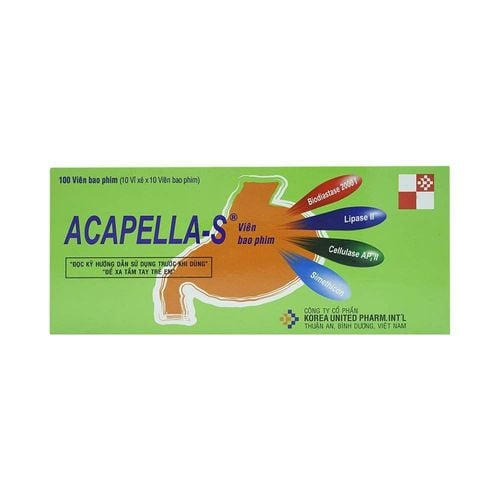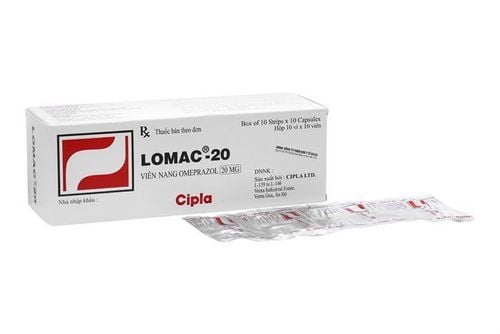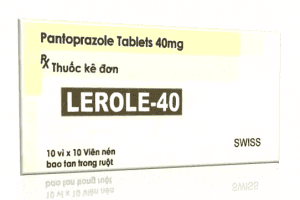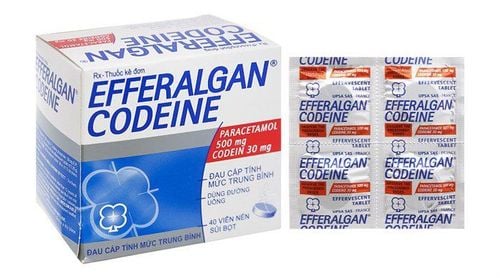This is an automatically translated article.
Drug Panloz 20 is an anti-secretory drug, the main ingredient is Pantoprazol. This is a selective proton pump inhibitor in gastric cells, which helps to support the treatment of gastric ulcers, gastroesophageal reflux disease and diseases caused by increased gastric acid secretion.
1. What is Panloz 20?
Panloz 20 brand-name drugs of Pantoprazole, that is, the main active ingredient is Sodium Pantoprazol sesquihydrate with a content equivalent to 20mg of Pantoprazole, prepared in the form of enteric-coated film-coated tablets. Pantoprazole is a proton pump inhibitor, which inhibits a terminal stage in gastric acid formation by covalent binding with the enzyme (H+, K+)-ATPase or proton pump at the secretory surface. of gastric parietal cells. This leads to inhibition of normal gastric acid secretion and also in the case of stimulants (due to cold, stress, medication,...). In trials, an anti-acid effect lasting more than 24 hours for all different doses was tested.
2. Uses of the drug Panloz 20
Indications of the drug Panloz 20 in the following cases:
Patients with gastroesophageal reflux disease (GERD). Stomach ulcer or duodenal ulcer. Prevention of gastric and duodenal ulcers caused by the use of non-steroidal anti-inflammatory drugs. Pathological hypersecretory states as seen in Zollinger-Ellison syndrome. Contraindications: Hypersensitivity to the active ingredient pantoprazol, to any component of the drug or to other benzimidazole derivatives (e.g. esomeprazole, lansoprazole, omeprazole, rabeprazole).
3. Dosage and how to use Panloz 20
How to use:
Panloz 20 is used orally, usually once a day in the morning 30-60 minutes before eating. Swallow whole, do not crush or chew. If need to take 2 times, should take the second time at bedtime.
Dosage of Panloz 20:
Gastroesophageal reflux syndrome (GERD): The usual dose is 1 to 2 tablets of Panloz / time / day for 4 weeks, can last up to 8 weeks. Maintenance doses are also usually 1 to 2 tablets per day. In case of relapse, take 1 tablet/day. Gastric ulcer or duodenal ulcer: The usual dose is 2 tablets / time / day. Duration of treatment is from 2 to 4 weeks for duodenal ulcers or from 4 to 8 weeks for benign gastric ulcers. Combination regimen for eradication of Helicobacter pylori: Use a three-drug combination regimen including pantoprazol 40mg twice a day in combination with clarithromycin 500mg twice a day and amoxicillin 1g twice a day or metronidazol 400mg x 2 times/day. Use continuously for 1 week and should check again after the HP kill regimen. Prevention of ulcers caused by non-steroidal anti-inflammatory drugs: Take one tablet of panloz/day. Zollinger - Ellison syndrome: The starting dose should be 80mg/day (4 Panloz tablets). High doses up to 240 mg/day may be used. If the dose is more than 80mg/day, it should be divided into 2 doses. Hepatic impairment: The maximum dose for patients with hepatic impairment is 20mg/day or 40mg/day for alternate days. Patients with renal impairment: The maximum dose is 40mg/day. Children: Do not give this medicine to children because efficacy and safety have not been established.
4. Side effects of Panloz 20
Panloz 20 is well tolerated, rarely causing side effects. Some of the reported possible side effects include:
Uncommon side effects such as headache or mild diarrhea; Less common: Nausea, upper abdominal pain, malaise, constipation, flatulence, skin rash, itching and dizziness. Some very rare cases such as edema; drug fever; thrombophlebitis; heart failure; shock must defend; gastrointestinal infections. You need to tell your doctor if you experience any of these side effects or other reactions that are suspected to be caused by taking the medicine.
5. Notes when using Panloz 20
Before treatment with Panloz 20, you need to tell your doctor about your allergy or medical history, it is necessary to rule out malignancy in the stomach. Prolonged use of proton pump inhibitors, especially at high doses and for long periods of time (> 1 year), may slightly increase the risk of hip, wrist and spine fractures, mainly occurs in the elderly or in the sick when other risk factors are present. Observational studies have shown that proton pump inhibitors including pantoprazole increase the risk of fracture by 10 to 40%, in some cases possibly due to other factors. Patients at high risk of osteoporosis and fractures need to be cared for and need adequate vitamin D and calcium supplementation. Use caution when using this drug in patients with hepatic impairment, the elderly because of the increased risk of side effects. Diet ensures science and food safety to avoid the risk of causing gastrointestinal infections. Pregnancy and breast-feeding: There are no reliable studies on the use of these two subjects, so consider carefully before using and you must consult your doctor. Store Panloz medicine in a cool, dry place, away from direct light. Keep out of reach of children. Before use, check the expiry date and do not use if expired, showing signs of damage.
6. Drug interactions
Drug absorption of Panloz 20 depends on the pH of the stomach (because antacids increase gastric pH): Theoretically, the possibility of a pharmacokinetic interaction when pantoprazole is co-administered with drugs with high gastric pH. gastric pH-dependent absorption such as ampicillin ester, digoxin, iron salts, ketoconazole. This may increase or decrease the absorption of the drug when the pH of the stomach is increased. Warfarin: There is a potential for an increase in INR and prothrombin time when warfarin is co-administered with proton pump inhibitors, including pantoprazole. Increased risk of abnormal bleeding and death; Monitor for increases in INR and prothrombin time when pantoprazole is co-administered with warfarin. Sucralfate: Concomitant use may delay absorption and reduce bioavailability of proton pump inhibitors (eg lansoprazole, omeprazole); Proton pump inhibitors should be taken at least 30 minutes before taking sucralfate. In summary, Panloz is a medicine to reduce gastric acid secretion, which is prescribed by doctors to treat diseases of the stomach and duodenum. The use of drugs should be adhered to the right dosage and time of use to ensure the best treatment effect.




